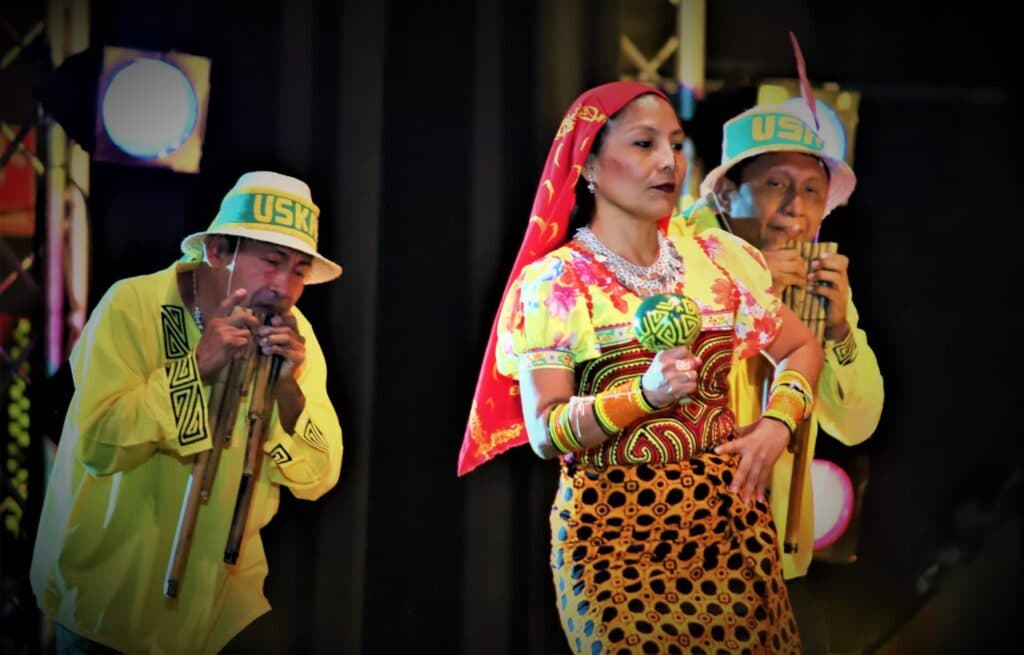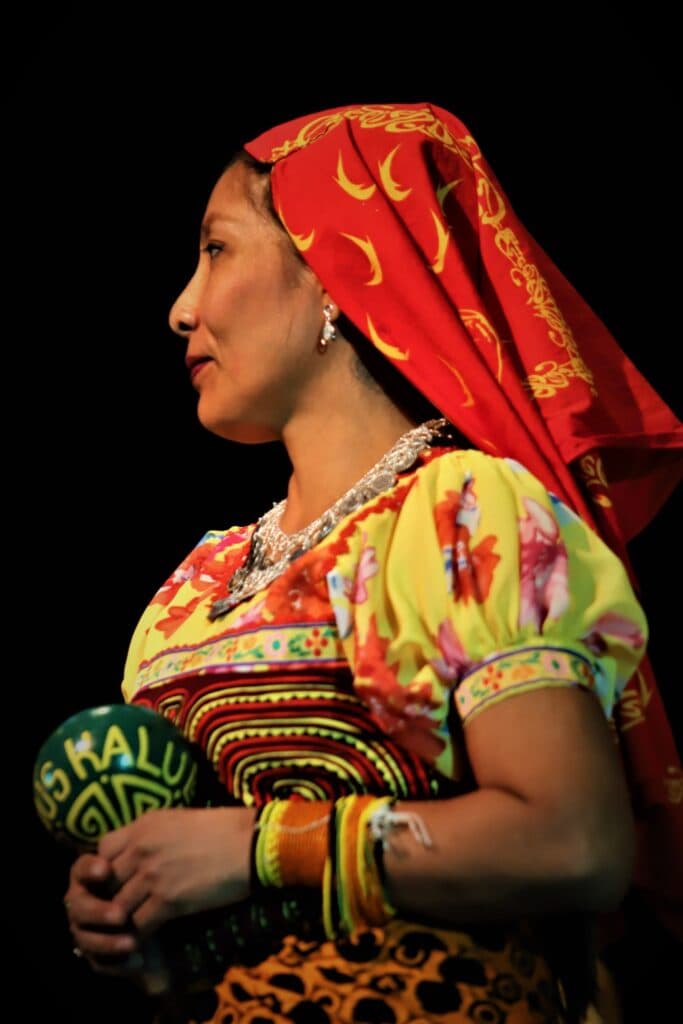Among most indigenous dances that can be seen in Panama, the most reserved in terms of its origins, meaning and symbolism is the Guna dance.
The cultural expressions that we see in tourist places do not always amalgamate everything that the traditions of the natives entail. Such is the case of the Guna dance, which many have been able to witness in public places such as Cinta Costera or Casco Antiguo, and which represent a millenary choreography with some transformations to be more attractive and entertaining for general public.

The Guna dance that is seen in capital city is known as “Gammu Burwi”, it is also called “Noga Gobbe” but this last name is not used much. “The dance that has been transforming over time, adapting to the new realities of society; still maintains a lot of the spiritual, religious and ceremonial essence of the Guna dance,” according to Magister Diguar Sapi, Choreographer of the National Ballet of the Ministry of Culture of Panama, a scholar and researcher of this dance and who is also an expert in the contemporary dance.

Brief Context
There are hundreds of Guna´s dances that seek to create a connection between them and mother nature. Its oldest choreographies are reserved for ceremonies or special rites that are loaded with a lot of spirituality, which is why they are unknown to most Panamanians as tourists.
These ancient expressions evoke the movements of nature such as the air, river, sea, birds and other animals. It should not be taken – as a reference, because the other dances are of rites in ceremonies that are carried out in the Region.
Tradition with Adaptations
As part of the interest of making Guna culture more widely known, the Guna dance has undergone certain transformations, always preserving that spirit of resistance towards the oppressive system that is reflected in the symbolism of its movements.
A Guna dance group with more than 30 years of experience is the “USKALU”, made up of 50 Guna migrants living in capital city. Its members strive to strengthen, highlight and revitalize the Kuna traditions through dance. It is made up of children, youth and adults under the coordination of its director, Soguiguili Diaz.

The Guna photographer Gilberto Alemancia, known for his work internationally, is the one who provides the photos that illustrate this article. He also takes photos of the work carried out by the dance group “USKALU”, who have performed in places of international projection such as the Panama Convention Center in Amador. He has also cooperated with them in the play “Nabba” in the indigenous theater.
Alemancia stressed that according to the tradition transmitted by his grandparents, the importance of instruments in the Guna´s dances stands out. “It is believed that flutes are not simple objects, have spirits because it transmit messages”, information in a text provided by the dance group.
Love for the Guna Legacy
Teacher Sapi emphasized “the importance of recognizing that the Guna dance is not what we see in the city. In order to survive and be shown to the public, the “Gammu Burwi” had to undergo adaptations to become part of the national culture”. In turn, he commented that the true Guna dance is so ceremonial that it could not be performed on a daily basis.
Other facts that Sapi stressed is that both the Mola and the Guna dance in the city have been a symbol of identity, resistance and defense of their culture.
Photos courtesy: Gilberto Alemancia







